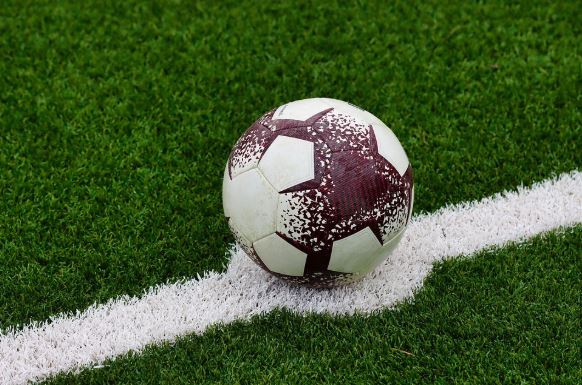Imagine you are sitting at Old Trafford on a bright Sunday afternoon. Manchester United are playing Aston Villa, the crowd is restless, and kickoff has just sounded.
You open your betting slip and face a simple but important choice. Should you back goals in the first half when both teams are fresh, or should you wait for the second half when fatigue, substitutions, and longer stoppage time change the rhythm of the match.
This decision is not only about instinct. It is about understanding how football works in both halves, how trends in modern leagues have shifted, and how you can make your reading of the game pay off.
READ ALSO: How to Bet on Correct Scores with Realistic Expectations
What usually happens in the first half and second half
Across top football leagues, more goals are scored in the second half than in the first. Statistical reviews of thousands of matches show that nearly sixty percent of goals arrive after the break, with the final fifteen minutes often producing the highest share of scoring.
The first half tends to be more controlled, with both teams following tactical plans, while the second half opens as players get tired and managers bring on substitutes to change the pace of the game.
This is not a random pattern. It reflects how the sport is structured and why betting markets offer distinct opportunities on each half.
Why has late scoring grown in recent seasons
Since 2023 referees have been told to add back all time lost during celebrations, substitutions, and delays. This instruction has made matches longer.
In the Premier League, stoppage time of eight to twelve minutes is now common, giving teams extra time to score late goals.
The change has had a real effect. Goals per match have risen, and clubs with deep benches, such as Manchester City or Liverpool, are better equipped to use those extra minutes.
La Liga has followed the same trend, though matches in Spain still show a cautious first half before the pace rises later.
When is the first half the right choice
Betting on the first half is smart when you expect an early onslaught. Think of Manchester City at home to a newly promoted side.
Pep Guardiola’s team often presses high from the start, wins corners quickly, and forces defenders into mistakes. In such a game, an early goal is very likely.
Liverpool at Anfield can also overwhelm weaker sides in the first half, with their crowd pushing them to start fast. Barcelona at home against mid table opposition often shows the same pattern.
In these matches, a first half over market or a first half goal bet can be profitable. The signs to watch include shot volume in the first twenty minutes, aggressive pressing, and a history of early goals in recent fixtures.
When is the second half the right choice
The second half becomes more attractive when matches start tight but space opens later. Imagine Arsenal away at Brighton.
The first half may end goalless because both sides hold shape, but after the break the match changes as players tire and substitutions add speed.
Real Madrid often break stubborn mid table teams at the Bernabéu after the hour mark when fresh attackers come on.
The longer added time window means there are more chances for goals between the eightieth and one hundredth minute. In these cases, betting on the second half over or a team to score in the second half can bring good value.
READ ALSO: Double Chance Bets Explained (2025 Football Betting Guide)
Do fouls and cards change half betting
Yes. Cards are more common after the break, especially yellow cards for tactical fouls when players are tired or desperate to stop counter attacks.
A second half with many bookings can lead to more free kicks near the box or even a red card that turns the match. For example, in a Madrid derby, tempers often flare in the second half, and that can create openings for late goals.
In the Premier League, referees also tend to let matches flow early before tightening control later, which means more fouls are punished after half time. As a bettor, this shift adds weight to second half goal markets.
What role does fatigue play in late scoring
Fatigue changes everything. Scientific studies on elite players show that sprint speed, reaction time, and passing accuracy decline as matches go on. Defenders make more mistakes in positioning, goalkeepers react a fraction slower, and midfielders lose sharpness in tracking runs.
At the same time, attackers with fresh legs from the bench find space more easily. This combination explains why second halves often see more goals.
For example, when Arsenal bring on Gabriel Martinelli against tired full backs in the seventy fifth minute, his pace can tilt the match. The same applies in La Liga when Barcelona or Real Madrid unleash young wingers late in the game.
How do the Premier League and La Liga compare
The Premier League has become known for late goals since longer stoppage time was introduced. Matches regularly stretch beyond one hundred minutes, giving teams extra chances to score.
Clubs with strong depth, like Manchester City, thrive in this setting. La Liga is slightly different. Spanish matches often begin with slower, more tactical play, especially when mid table sides face big clubs.
But once the first goal goes in, the game opens and late goals flow. Understanding league style helps you decide. In England, second half bets are strong when big clubs are level at half time. In Spain, be ready for slow starts but sudden bursts after the hour.
How can in play betting make use of half patterns
In play betting allows you to act when the match does not follow the pre match script. Sometimes a favorite underperforms in the first half, creating value on second half goals.
For example, if Real Madrid are goalless at half time but have dominated possession and chances, a second half goal bet can be sensible because their quality usually tells late.
Likewise, if a match is open early with many shots, you may find value in a first half goal market even after kickoff. The key is to watch carefully, compare live numbers with pre match expectations, and move when the market has not adjusted quickly.
A visual look at goal timing
Here is a simple picture of how goals are shared.
First half goals: ██████████
Second half goals: ████████████████
The second bar is longer, showing how more goals come after the break. Added time in recent years has made this difference even greater.
Scenario guide for practical betting
Situation | What to check quickly | Example match | Better option |
|---|---|---|---|
Strong favorite at home pressing early | Early shots, corners, possession tilt | Manchester City vs Luton Town | First half goal |
Cagey derby with early fouls | Few shots, tight defending, rising fouls | Atletico Madrid vs Real Madrid | Second half goal |
Team with deep bench chasing late | Substitutions around 60 minutes, long stoppage time | Liverpool vs West Ham | Second half goal |
Low scoring side vs fast counter team | Space behind defense, early breaks | Real Sociedad vs Valencia | First half under, then second half over in play |
Step by step plan for choosing first or second half
One. Before kickoff, write down what you expect based on form and style. Two. Watch the first fifteen minutes to see if the favorite is dominating. Three. Track added time. Longer stoppages mean more chances late. Four. Pay attention to the referee.
An early booking can hint at more late cards. Five. Consider substitutions. If a team has strong attackers on the bench, second half bets gain value. Six. Always manage your bankroll. Half bets can carry higher variance, so use smaller, consistent stakes.
Story example
Think about a Saturday where Tottenham host Bournemouth. You back a first half goal because Spurs start quickly and force three saves in the first twenty minutes.
The bet wins before halftime. Later that evening Real Betis host Atletico Madrid. The first half is goalless with few chances, so you wait. At halftime Atletico bring on a pacey winger, and Betis begin to tire.
You back a second half over, and in the eighty third minute a scrappy corner delivers your win. Two matches, two different halves, both decided by reading the game rather than guessing.
Frequently Asked Questions
Are there always more goals in the second half
Yes, across most leagues and seasons the second half produces more goals, often close to sixty percent of the total.
Has the new stoppage time rule made a big difference
Yes, since 2023 referees add all lost time back. This has created longer endings and more late goals, especially in the Premier League.
Do cards really come more in the second half
Yes, most yellow and red cards are given after halftime. This leads to more free kicks, penalties, and open play.
Does fatigue always help attackers
Not always, but in general tired defenders make more errors, while fresh attackers from the bench take advantage. This is why many late goals are scored by substitutes.
Should I always back the second half in the Premier League
No, while the second half has more goals overall, the first half can still be profitable when favorites start fast. Use the context of the match.
Is home advantage stronger in the second half
Crowds often lift teams late in the match, especially when chasing a result. Combined with added time, this makes late home goals more common.
How should I stake on half bets
Treat half bets as higher risk than full match bets. Keep your stake small and steady, usually one or two percent of your total bank.
Are there teams that always score early
Teams like Manchester City, Liverpool, and Bayern Munich often press hard in the first half, but patterns can change based on opponent and schedule.
Are there teams that always score late
Real Madrid and Manchester United are famous for late goals, and with longer stoppage time this pattern has grown stronger.
READ ALSO: What Is a Handicap Bet in Football? Full Guide for 2025
Final Word
Your choice between the first half and the second half should never be random. The first half suits favorites that press hard from kickoff, while the second half suits matches that open up with fatigue, substitutions, and long stoppages.
Both can be profitable when read correctly. Watch the flow of play, use league trends, respect referee decisions, and manage your stake. Football is a ninety plus minute story, and your bet should match the chapter where the action is most likely to unfold.

Kenneth is a an avid soccer follower, fan and writer. He is a consistent follower of the sport and is a fan of Chelsea FC.

